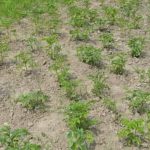Are you looking to transform your backyard into a stunning and functional space? One way to achieve this is by incorporating beautiful backyard vegetable gardens. Not only do these gardens provide fresh produce, but they also enhance the overall beauty of your outdoor space. In this article, we will explore how to plan, design, and maintain a vegetable garden that adds beauty and charm to your backyard.
Adding a vegetable garden to your backyard not only provides you with a sustainable source of fresh produce but also enhances the aesthetic appeal of your outdoor space. With the right planning and design, you can create a stunning layout that not only looks beautiful but also maximizes the growth and health of your plants. Selecting the right vegetables and understanding soil preparation are essential steps in achieving a visually appealing and thriving backyard garden.
In addition to discussing the visual impact of beautiful backyard vegetable gardens, this article will also cover practical tips for maintaining soil health, utilizing companion planting techniques, creative container gardening ideas, seasonal care and maintenance, as well as harvesting and enjoying the fruits of your labor. With the right guidance, creating a beautiful vegetable garden in your backyard is an achievable goal that will enrich both the appearance of your outdoor space and your dining table.
Planning and Design
Creating the perfect layout for a beautiful backyard vegetable garden is an essential step in enhancing the overall aesthetic of your outdoor space. By carefully planning and designing the layout, you can ensure that your garden not only looks visually appealing but also functions efficiently. Here are some tips for creating the perfect layout for a beautiful vegetable garden:
Determine the Layout
When planning the layout of your vegetable garden, consider the size and shape of your backyard, as well as any existing landscaping features. Decide whether you want traditional rows, raised beds, or a more intricate design such as a keyhole or spiral layout. Keep in mind that accessibility and sunlight are crucial factors to consider when determining the layout.
Consider Companion Planting
Incorporate companion planting into your design to maximize space and encourage beneficial relationships between plants. For example, planting tall crops such as corn or trellised tomatoes on the north side of your garden can provide shade for shorter plants like lettuce or spinach.
Add Decorative Elements
Enhance the beauty of your vegetable garden by incorporating decorative elements such as trellises, arbors, or pathways. These features not only add visual interest but also provide functional support for climbing plants and easy access to different areas of the garden.
By taking these factors into consideration when planning and designing your beautiful backyard vegetable garden, you can create a visually stunning and productive space that will be a joy to tend throughout the growing season.
Choosing the Right Vegetables
When it comes to creating a beautiful backyard vegetable garden, selecting the right vegetables is key to ensuring a thriving and visually appealing space. Not all vegetables are well-suited for backyard gardens, so it’s important to choose plants that will thrive in this environment.
The first step in this process is to consider the climate and growing conditions in your specific area. Research which vegetables are known to do well in your region, taking into account factors such as temperature, sunlight, and soil type.
Another important consideration when choosing vegetables for your backyard garden is the amount of space you have available. If you have a small or limited outdoor area, you may want to focus on growing compact or dwarf varieties of vegetables that won’t take up too much space. Alternatively, if you have more room to work with, you can consider larger plants or vining vegetables that can spread out and fill the space.
Additionally, it’s essential to select vegetables that align with your personal preferences and cooking habits. Think about which vegetables you and your family enjoy eating the most and prioritize those when planning your garden. You may also want to consider growing vegetables that are expensive or difficult to find at the grocery store, giving you access to fresh produce right from your own backyard.
By carefully choosing the right vegetables for your backyard garden based on local climate conditions, available space, and personal preferences, you can create a stunning and productive garden that enhances the beauty of your outdoor living area. With a variety of thriving plants carefully selected for their suitability in a backyard setting, you can enjoy a bountiful harvest throughout the year from your beautiful backyard vegetable garden.
Soil Preparation and Maintenance
Testing and Amending the Soil
Before planting your beautiful backyard vegetable garden, it is crucial to test the soil to ensure that it has the right pH level and nutrient content for optimal plant growth. You can easily purchase at-home testing kits or send a sample to a professional laboratory for analysis. Based on the results, you may need to amend the soil with organic matter, such as compost or well-rotted manure, to improve its structure and fertility.
Mulching and Irrigation
To maintain healthy soil in your vegetable garden, consider using mulch to retain moisture, suppress weeds, and regulate soil temperature. Organic mulch such as straw, wood chips, or grass clippings can also gradually decompose, adding essential nutrients back into the soil. Additionally, proper irrigation is crucial for keeping the soil moist but not waterlogged. Consider installing a drip irrigation system or hand-watering deeply and infrequently to ensure that your plants receive adequate hydration without causing soil erosion.
Crop Rotation and Cover Crops
Furthermore, implementing crop rotation is essential for maintaining healthy soil in your beautiful backyard vegetable garden. This practice involves alternating the types of crops planted in specific areas from season to season to prevent nutrient depletion and minimize disease buildup. In addition to crop rotation, sowing cover crops like clover or ryegrass during fallow periods can improve soil health by preventing erosion, suppressing weeds, and adding organic matter when tilled into the soil.
By following these tips for keeping your soil healthy and nutrient-rich in your beautiful backyard vegetable garden, you’ll be able to create a thriving and sustainable ecosystem that supports abundant plant growth and delicious harvests throughout the year.
Companion Planting
What Is Companion Planting?
Companion planting is the practice of growing certain types of plants together in order to benefit each other. Whether it’s through pest control, pollination, or providing shade and support, companion planting can help maximize growth and minimize pests in your beautiful backyard vegetable garden.
One popular example of companion planting is the Three Sisters method used by Native American tribes, where corn, beans, and squash are planted together. The corn provides a natural trellis for the beans to climb, while the beans provide nitrogen for the soil, and the squash acts as a living mulch to suppress weeds. This type of synergy between plants is a key principle behind companion planting.
Choosing the Right Companion Plants
When selecting companion plants for your vegetable garden, consider the specific needs of each plant and how they can complement each other. For example, planting basil near tomatoes can help repel pests that are attracted to tomato plants. Marigolds are also known to deter certain types of nematodes in the soil, making them a beneficial companion plant for many vegetables.
It’s important to research which plants go well together and which ones should be kept apart due to potential negative interactions. By carefully planning your companion planting scheme, you can create a harmonious and visually appealing vegetable garden that thrives with minimal intervention.
Maximizing Growth and Minimizing Pests
In addition to providing aesthetic benefits, companion planting can also improve the health and yield of your vegetable garden. For example, growing aromatic herbs like rosemary or thyme near cabbage or broccoli can help deter pests that typically target these crops. By strategically choosing companion plants based on their natural insect-repelling properties or complementary growth habits, you can create a more resilient and sustainable garden.
Utilizing companion planting techniques not only contributes to the beauty of your backyard vegetable garden but also aligns with principles of organic gardening by promoting biodiversity and reducing reliance on chemical interventions for pest control. With proper planning and execution, companion planting can be an effective tool in creating a flourishing and visually stunning vegetable garden.
Creative Container Gardening
When it comes to creating a beautiful backyard vegetable garden, traditional in-ground planting is not the only option. Creative container gardening offers a unique and aesthetically pleasing way to grow a variety of vegetables right in your backyard. Not only does it provide an opportunity to showcase your gardening skills, but it also allows for flexibility in terms of space and design. Here are some tips for utilizing containers to create a stunning and functional vegetable garden:
- Choose the right containers: Selecting the appropriate containers is crucial for successful container gardening. Look for pots or containers that are large enough to accommodate the root systems of the vegetables you want to grow. Make sure they have proper drainage holes to prevent waterlogging, which can lead to root rot.
- Select suitable vegetables: While almost any vegetable can be grown in containers, some are more suitable than others. Opt for compact or dwarf varieties of vegetables like tomatoes, peppers, lettuce, and herbs that thrive in containers. Avoid overcrowding by choosing plants that are compatible with each other and have similar growing requirements.
- Provide proper care and maintenance: Container-grown vegetables require regular watering and fertilizing due to their limited soil space. Consider using a high-quality potting mix that is rich in nutrients and provides good drainage. Keep an eye on the moisture levels of the soil, especially during hot weather, as containers tend to dry out quickly.
By incorporating creative container gardening techniques into your backyard vegetable garden, you can add visual interest while maximizing space. Whether you have a small patio or a spacious backyard, beautiful container gardens can be tailored to fit any outdoor setting while providing an abundant harvest of fresh produce.
Seasonal Care and Maintenance
Maintaining the beauty of your vegetable garden throughout the year requires careful planning and consistent effort. Each season brings its own set of tasks and challenges, but with the right approach, you can keep your garden looking vibrant and productive all year long.
In the spring, it’s important to start by cleaning up any debris that may have accumulated over the winter months. This includes dead leaves, branches, and any other clutter that could harbor pests or diseases. It’s also a good time to prepare the soil for planting by adding compost or other organic matter to replenish nutrients.
As summer approaches, regular watering is essential to keep your vegetables healthy and thriving. Depending on your climate, you may need to water daily or every other day to ensure that your plants have an adequate water supply. Additionally, staying on top of weeding will help prevent unwanted plants from competing with your vegetables for resources.
In the fall, as temperatures cool down, it’s time to start thinking about preparing your garden for the winter months. This might involve protecting more delicate plants from frost, covering soil with mulch to insulate roots, and cleaning up any remaining plant debris. It’s also a great time to plant cool-season vegetables that will continue to produce into the early winter.
| Season | Maintenance Tasks |
|---|---|
| Spring | Clean up debris; Prepare soil; Start planting |
| Summer | Regular watering; Weeding; Pest control |
| Fall | Protecting plants from frost; Mulching; Planting cool-season vegetables |
Harvesting and Enjoying
In conclusion, creating a beautiful backyard vegetable garden is not only a rewarding and fulfilling experience, but it also allows you to enjoy fresh and healthy produce right at home. By following the tips and guidelines provided in this article, you can design, maintain, and harvest from a thriving vegetable garden that adds beauty and functionality to your outdoor space.
Remember to continuously care for your vegetable garden by watering, weeding, and monitoring plant health throughout the year. By doing so, you can ensure a bountiful harvest of delicious vegetables that you can enjoy in your daily meals. Whether it’s crunchy cucumbers in the summer or hearty root vegetables in the fall, there is nothing quite like the satisfaction of enjoying the fruits of your labor straight from your own backyard.
Overall, with proper planning, maintenance, and care, a beautiful backyard vegetable garden can not only enhance the aesthetic appeal of your property but also provide abundant fresh produce for you and your family to savor. So roll up your sleeves, get ready to dig in the dirt, and start creating your very own stunning vegetable garden today.
Frequently Asked Questions
How Can I Make My Vegetable Garden Look Beautiful?
One way to make your vegetable garden look beautiful is by incorporating colorful and varied plantings. Choose a mix of vegetables with different leaf textures, heights, and colors to create visual interest. Adding flowers and ornamental plants can also enhance the garden’s beauty.
What Is a Good Layout for a Vegetable Garden?
A good layout for a vegetable garden is one that maximizes space and sunlight. Consider using raised beds or planting in rows to make the most of your available area. Also, think about the needs of each vegetable – placing taller plants on the north side so they don’t shade shorter ones, for example.
What Vegetables Grow Well Together?
Certain vegetables grow well together due to their complementary needs and natural pest repellent properties. For instance, planting tomatoes with basil can improve the tomatoes’ flavor and repel pests.
Carrots and onions are another combination that work well together as they don’t compete for space or nutrients. Understanding these companion planting principles can help you plan out an efficient and harmonious vegetable garden.

If you’re looking to get into vegetable gardening, or are just looking for some tips on how to make your current garden better, then you’ve come to the right place! My name is Ethel and I have been gardening for years. In this blog, I’m going to share with you some of my best tips on how to create a successful vegetable garden.





